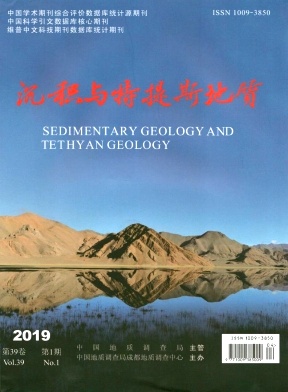|
[1]
|
Dow W G. Application of oil correlation and source rock data to exploration in Williston basin[J]. AAPG Bulletin, 1972, 56(8):615.
Google Scholar
|
|
[2]
|
Demaison G, Huizinga B J. Genetic classification of petroleum systems[J]. AAPG Bulletin, 1991,75(10):1626-1643.
Google Scholar
|
|
[3]
|
Perrodon A, Masse P. Subsidence, sedimentation and petroleum systems[J]. Journal of Petroleum Geology, 1981, 7(1):5-25.
Google Scholar
|
|
[4]
|
Magoon L B, Dow W G. The petroleum system:from source to trap[C]. Tulsa:AAPG Memoir, 1994. 3-24.
Google Scholar
|
|
[5]
|
郭永强, 刘洛夫, 朱胜利, 等. 阿姆达林盆地含油气系统划分与评价[J]. 石油勘探与开发, 2006, 33(4):515-520.
Google Scholar
|
|
[6]
|
何登发, 陈新发, 况军, 等. 准噶尔盆地石炭系烃源岩分布与含油气系统[J]. 石油勘探与开发, 2010, 37(4):397-408.
Google Scholar
|
|
[7]
|
何家雄, 张伟, 卢振权, 等. 南海北部大陆边缘主要盆地含油气系统及油气有利勘探方向[J]. 天然气地球科学, 2016, 27(6):943-959.
Google Scholar
|
|
[8]
|
王大鹏, 白国平, 陆红梅, 等. 扎格罗斯盆地含油气系统分析与资源潜力评价[J]. 现代地质, 2016, 30(2):361-372.
Google Scholar
|
|
[9]
|
邓超, 白国平, 仲米虹, 等. 巴西桑托斯盆地含油气系统划分与评价[J]. 海相油气地质, 2014, 19(3):35-42.
Google Scholar
|
|
[10]
|
王一帆, 白国平. 中阿拉伯盆地油气分布规律和主控因素研究[J]. 沉积与特提斯地质, 2014, 34(2):104-112.
Google Scholar
|
|
[11]
|
陈学海, 卢双舫, 陈学洋, 等. 北乌斯丘尔特盆地含油气系统及勘探前景分析[J]. 特种油气藏[J]. 2017,24(3):31-36.
Google Scholar
|
|
[12]
|
Nawawi A, Anwar S, Heriyanto N, et al. West Natuna Basin, Petroleum Geology of Indonesian Basins-Principles, Methods, and Application[M]. Jakarta:Pertamina BPPKA, 1996:86-88.
Google Scholar
|
|
[13]
|
Hakin M R, Naiola M Y Y, Simangunsong Y R A, et al. Hydrocarbon play of West Natuna Basin and challenge for new exploration related to structural setting and stratigraphic succession[J]. Journal of Computational Chemistry, 2008, 20(10):1018-1027.
Google Scholar
|
|
[14]
|
朱伟林, 胡平, 江文荣, 等. 南亚-东南亚含油气盆地[M]. 北京:科学出版社, 2012.9-89.
Google Scholar
|
|
[15]
|
倪仕琪, 王志欣, 刘凤鸣, 等. 印度尼西亚西纳土纳盆地油气地质特征与分布规律[J]. 海洋地质前沿, 2017, 33(2):26-34.
Google Scholar
|
|
[16]
|
IHS Energy.West Natuna Basin[DB/OL]. (2012-10)[2016-3-11]. http://www.ihs. com/.
Google Scholar
|
|
[17]
|
C&C Reservoirs. Belida Field West Natuna Basin, Indonesia[DB/OL]. (2011-5)[2016-6-15].http://www.ccreservoirs.com/.
Google Scholar
|
|
[18]
|
杨福忠, 洪国良, 祝厚勤, 等. 东南亚地区成藏组合特征及勘探潜力[J]. 地学前缘, 2014, 21(3):112-117.
Google Scholar
|
|
[19]
|
Doust H, Summer H S. Petroleum systems in rift basins-a collective approach in Southeast Asian basins[J]. Petroleum Geoscience, 2007, 13(2):127-144.
Google Scholar
|
|
[20]
|
Doust H, Noble R A. Petroleum systems of Indonesia[J]. Marine & Petroleum Geology, 2008, 25(2):103-129.
Google Scholar
|
|
[21]
|
姚永坚, 吕彩丽, 康永尚, 等. 东南亚地区烃源岩特征与主控因素[J]. 地球科学(中国地质大学学报), 2013, 38(2):367-378.
Google Scholar
|
|
[22]
|
邓运华. 试论中国南海两个盆地带油气地质差异性[J]. 中国海上油气, 2016, 28(6):1-8.
Google Scholar
|
|
[23]
|
杨明慧, 张厚和, 廖宗宝, 等. 南海南沙海域主要盆地含油气系统特征[J]. 地学前缘, 2015, 22(3):48-58.
Google Scholar
|
|
[24]
|
Shoup R C, Morley R J, Swiecicki T, et al. Tectono-stratigraphic framework and tertiary paleogeography of Southeast Asia; Gulf of Thailand to South Vietnam Shelf[J]. Houston Geological Society Bulletin, 2013, 55(6):27, 29, 31, 33, 35, 37, 39.
Google Scholar
|
|
[25]
|
Du Bois E P. Review of principal hydrocarbon-bearing basins of the South China Sea area[J]. Energy, 1981, 6(11):1113-1140.
Google Scholar
|
|
[26]
|
Tjia H D, Liew K K.Changes in tectonic stress field in northern Sunda Shelf basins[J]. Geological Society, London, Special Publications, 1996, 106(1):291-306.
Google Scholar
|
|
[27]
|
Wirojudo G K, Wongsosantiko A. Tertiary tectonic evolution and related hydrocarbon potential in the Natuna area[J]. Energy, 1985, 10(3-4):433-455.
Google Scholar
|
|
[28]
|
Burton D, Wood L J, Burton D. Seismic geomorphology and tectonostratigraphic fill of half grabens, West Natuna Basin, Indonesia[J]. AAPG Bulletin, 2010, 94(11):1695-1712.
Google Scholar
|
|
[29]
|
Ginger D C, Ardjakusumah W O, Hedley R J, et al. Inversion history of the West Natuna Basin:examples from the Cumi-Cumi PSC[A]. 22nd Annual Convention Proceeding[C]. Jakarta:Indonesian Petroleum Association, 1993. 635-658.
Google Scholar
|
|
[30]
|
Nagura H, Honda H, Katori S. Tertiary inversion tectonics and petroleum systems in West Natuna Sea Basins, Indonesia[J]. Journal of the Japanese Association for Petroleum Technology, 2000, 65(1):91-102.
Google Scholar
|
|
[31]
|
Sutoto A. Reservoir geology of the Belida field South Natuna Sea, Block B[A]. 20th Annual Convention Proceedings[C]. Jakarta:Indonesian Petroleum Association, 1991:453-478.
Google Scholar
|
|
[32]
|
Michael E, Adrian H. The petroleum systems ofWest Block B PSC, South Natuna Sea, Indonesia[A]. 25th Silver Annual Convention Proceedings[C]. Jakarta:Indonesian Petroleum Association, 1996. 465-679.
Google Scholar
|
|
[33]
|
IHS Energy. Malay Basin[DB/OL]. (2012-10)[2016-3-15].http://www.ihs.com/.
Google Scholar
|
|
[34]
|
Prasetyo B. Source rock evaluation and crude oil characteristics, West Natuna Area, Indonesia[A]. 28th Annual Convention Proceeding[C]. Jakarta:Indonesian Petroleum Association, 2002. 825-837.
Google Scholar
|
|
[35]
|
Phillips S, Little L, Michael E, et al. Sequence stratigraphy of Tertiary petroleum systems in the West Natuna Basin, Indonesia[A]. Howes J V C, Noble R A. Proceedings of the Conference on Petroleum Systems of SE Asia and Australasia[C]. Jakarta:Indonesian Petroleum Association, 1997. 381-390.
Google Scholar
|
|
[36]
|
Madon M B H, Anuar A, Wong R. Structural evolution, maturation history, and hydrocarbon potential of the Penyu Basin, offshore peninsular Malaysia[A]. Howes J V C, Noble R A. Proceedings of the Conference on Petroleum Systems of SE Asia and Australasia[C]. Jakarta:Indonesian Petroleum Association, 1997. 403-424.
Google Scholar
|






 DownLoad:
DownLoad: